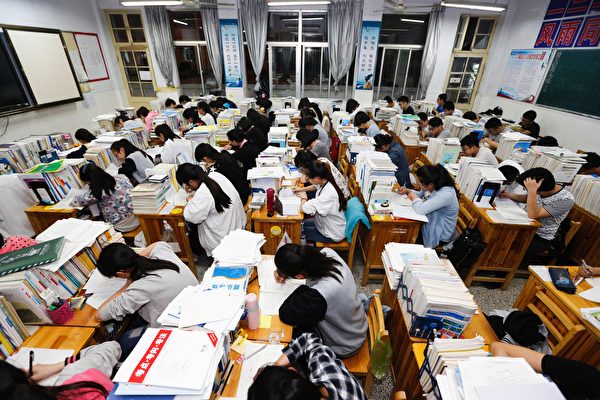In a tumultuous turn of events, “county-level middle schools,” once seen as institutions that could change the fate of rural and county-town students, are now facing an unprecedented collapse. These “county-level middle schools” are typically the best schools in Chinese county towns.
Analysis suggests that when trust in education deteriorates and the support for “county-level middle schools” dissipates, children not only lose the opportunity for upward mobility but also struggle to find even the most basic sense of security. This reflects a deep-rooted crisis of social stratification in Chinese society and the shattered dreams of those children from the bottom rungs of society.
Recently, a video circulating on the internet of a girl from Jiangyou Middle School in a county-level city in Sichuan being bullied and physically attacked has sparked public outrage. These disturbing incidents of campus violence are often viewed as isolated cases but may actually be just the tip of the iceberg of a deep crisis in China’s county-level education system.
“It’s not an isolated incident but a common underlying ailment: children lack a sense of security, schools fail to protect, and families often feel powerless,” remarked Li Xiao, who transitioned from a county-level middle school to prestigious universities and eventually into the education industry specializing in overseas business, sharing insights on the current state of county-level education in China.
Discussing the phenomenon of “county-level middle school collapse,” Li Xiao noted, “What’s even worse is that teaching positions are being commercialized. Some pay to secure a homeroom teacher position, making a profit within a year through red envelope gifts, leading to a chain of favoritism. This gray chain suppresses those who genuinely want to teach.” Li Xiao recounted an incident where his niece was treated differently just for not giving a red envelope to the homeroom teacher. Another friend’s child experienced severe psychological distress due to schoolyard exclusion.
“County-level middle school collapse” refers to the phenomenon where the once premier county-level middle schools in China, known for their high-quality education and high enrollment rates, experience continuous loss in teaching staff and top students, resulting in a significant decline in enrollment rates and ultimately becoming educational resource deserts.
“County-level middle schools are no longer stepping stones for upward mobility but rather prisons,” Li Xiao expressed. “When education loses its supporting force, county-level societies also lose the final connection to their future.”
Reflecting on his hometown high school, which experienced a decline over the years, Li Xiao noted the stark contrast from the school’s glory days to the current situation where students endure long hours with diminishing academic results. He pointed out the dwindling success rates in top university admissions and the overall decline in educational achievements over the years.
The crisis of “county-level middle school collapse” is not a sudden occurrence but a culmination of multiple factors, as analyzed by various sources:
Firstly, extreme resource disparities contribute significantly to the problem. According to Professor Yang Hua, author of the book “County-level Middle Schools,” provincial and municipal “superior middle schools” exploit their policy and funding advantages to attract top students from county-level middle schools while enticing key teachers with better compensation packages.
On the issue of trust deteriorating in the system, Li Xiao highlighted that county-level middle schools transform into rigorous academic machines where students are confined to a relentless study routine focusing solely on test scores, devoid of opportunities for self-expression and critical thinking. The pressure intensifies with results failing to meet expectations.
Moreover, the weakening of social functions poses another challenge. County-level middle schools, once the gateway for ordinary children to modern society, are now witnessing a gradual closure of this path as they falter.
As Li Xiao underscored, the crisis in county-level education extends beyond just deteriorating school conditions. It signifies a retreat of the entire county-level society from the educational competition, changing the perception of education as a means for social advancement.
Li Xiao emphasized the necessity for educational reform, presenting examples from other countries like India and Mexico, where varied pathways and community engagement ensure even marginalized students find opportunities for skill development and employment, unlike the binary logic prevalent in China’s county-level education system.
Reflecting on his experiences in various educational environments, Li Xiao emphasized that education should foster courage in individuals to express themselves and think critically, rather than focus solely on test scores.
In conclusion, Li Xiao highlighted the stark reality faced by county-level middle schools in China, emphasizing the urgent need to address the multifaceted challenges that have transformed these institutions from bridges to futures into abandoned crossings. The disconnection between population, education, and economy has left county-level middle schools devoid of purpose and direction for the future.

